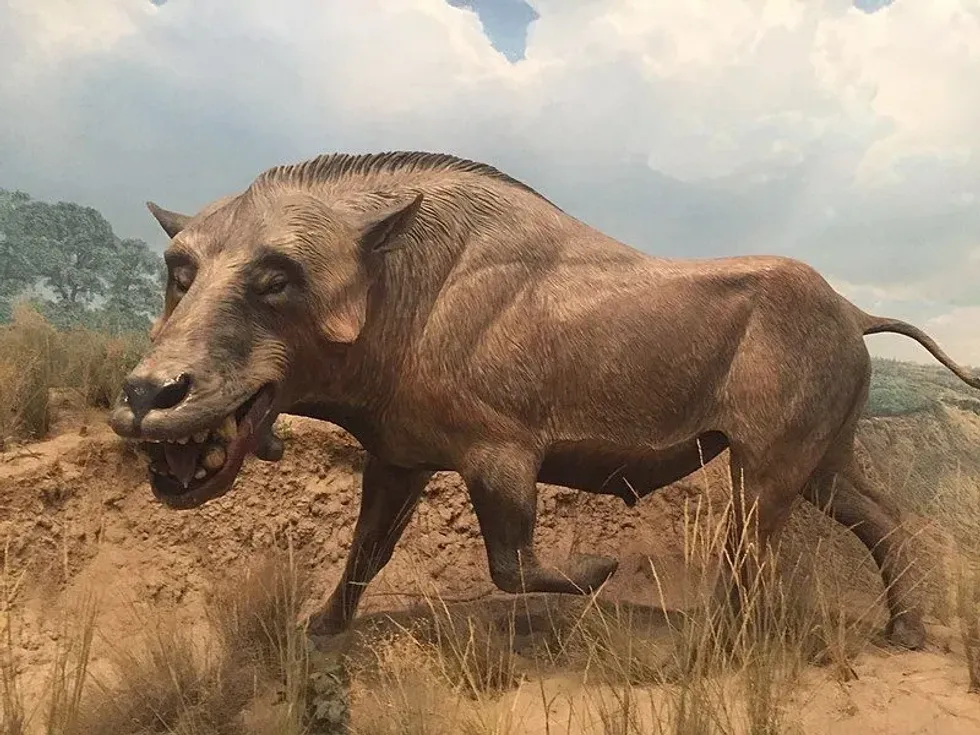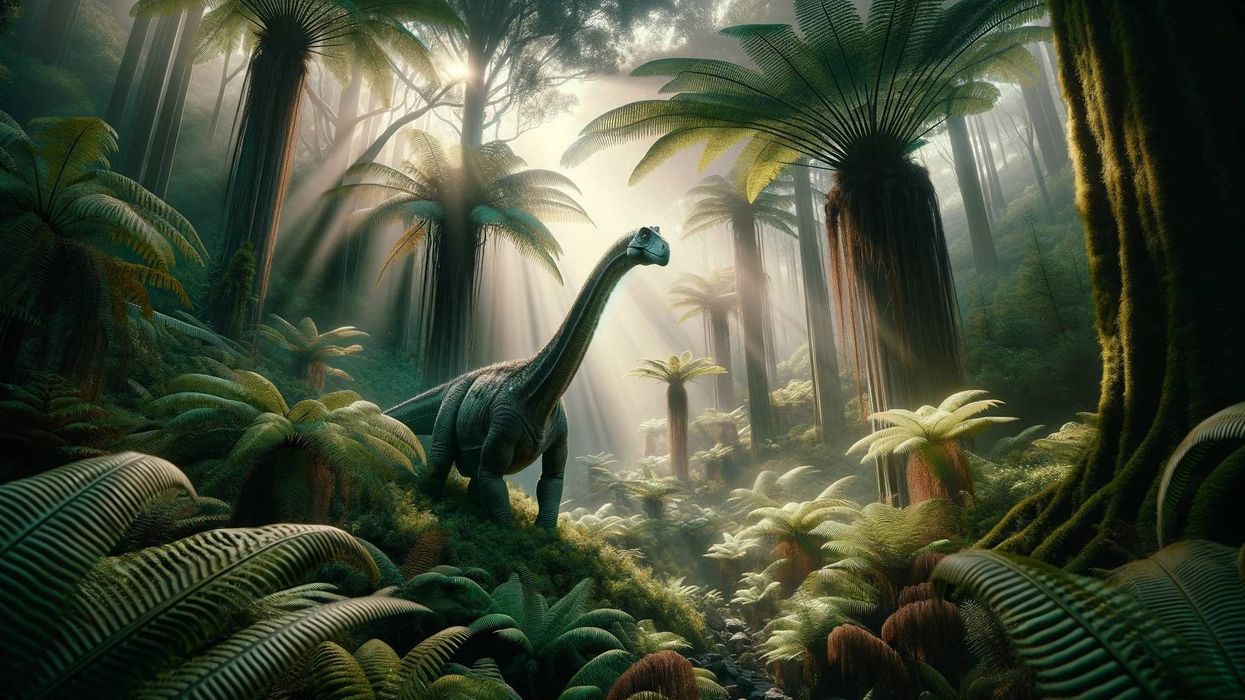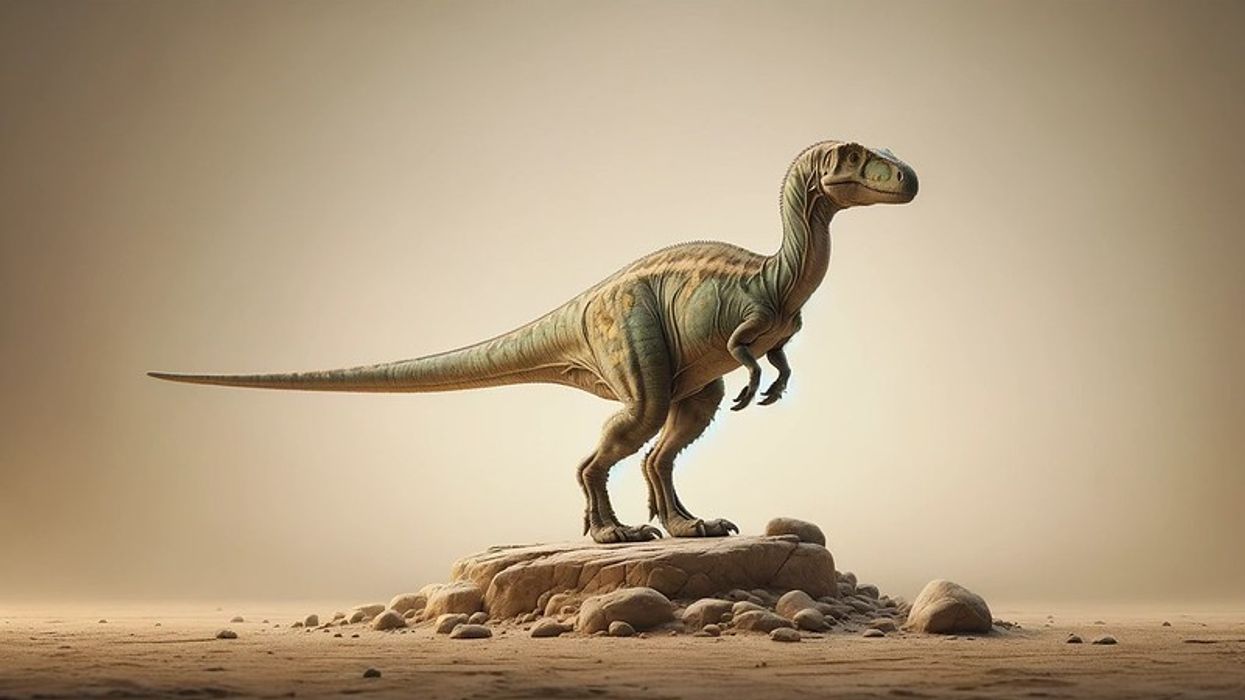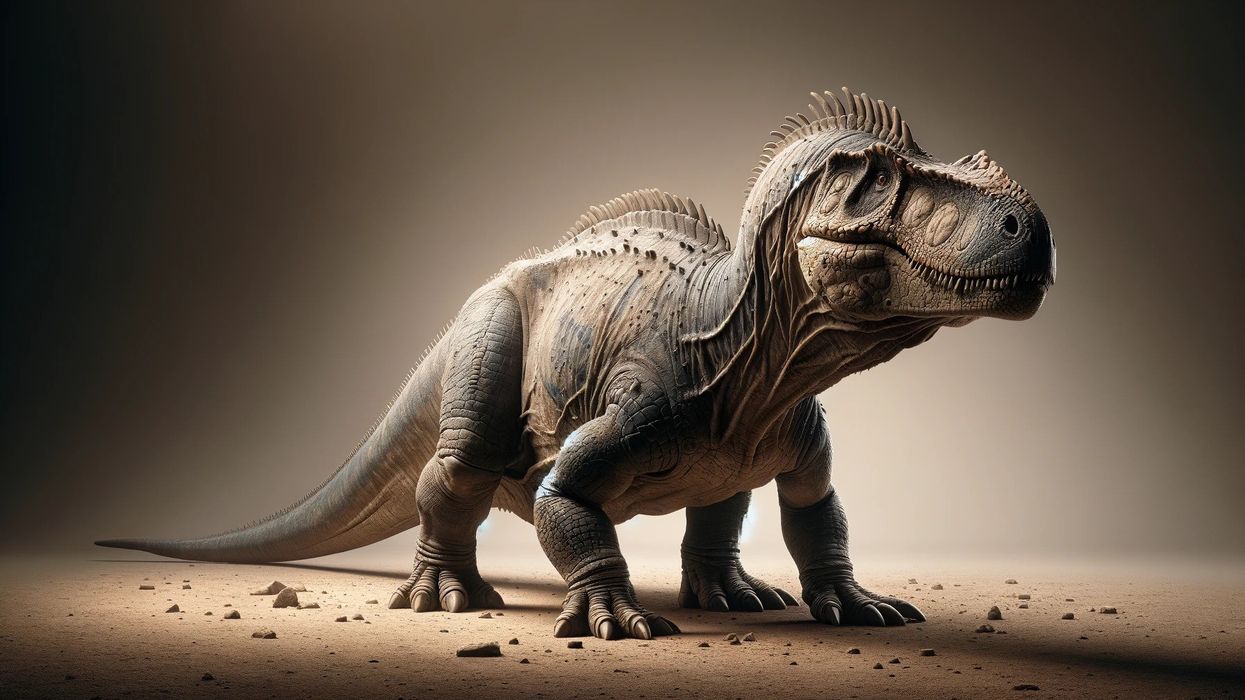The Dinohyus genus was among the largest members of the entelodont family. These mammals were estimated to have lived during the late Oligocene age of the Paleogene period to the Miocene age to the early Neogene period about 29-15 million years ago.
The Dinohyus (Daeodon) fossils were discovered in North America among the John Day Formation in Oregon and the Agate Springs quarry of Nebraska. These mammals were classified in 1878 by Edward Drinker Cope as Perissodactyls and were said to be closely related to the Menodus.
However, the discovery of the similar and more complete fossil of the Elotherium calkinsi, and its classification by Peterson as a species of Daeodon, led to the reclassification of the Dinohyus genus under Entelodontidae.
The Dinohyus was a terrestrial animal that preferred living among dense forests. However, the environmental shift from forests to the large prairies is said to have been a huge cause of their extinction during the mid-Miocene period. Their diet was selectively omnivorous which means they would feed based on the convenience of the situation.
If learning about ancient animals is your favorite pastime, check out the Dolichorhynchops and the Dinodontosaurus.
Dinohyus Interesting Facts
Was the Dinohyus a dinosaur?
No, the Daeodon, or Dinohyus, was a prehistoric mammal that resembled the modern pigs.
How do you pronounce 'Dinohyus'?
The name Dinohyus, which means 'terrible pig', is pronounced as 'di-noh-hai-us'.
What type of prehistoric animal was a Dinohyus?
The Daeodon was an entelodont, an extinct pig-like mammal, but much larger than present pigs.
In which geological period did the Dinohyus live?
Dinohyus lived from the Oligocene age of the Paleogene period to the Miocene age of the early Neogene period.
When did the Dinohyus become extinct?
The Daeodon is estimated to have gone extinct around 26-15.9 million years ago.
Where did a Dinohyus live?
These extinct animals are said to have lived in what is now known as North America. The lower jaw of type species, D. shonhonensis, was found in the John Day Formation in Oregon, USA. Another specimen, formerly called Dinohyus hollandi, was found in the Agate Springs quarry of Nebraska.
What was a Dinohyus' habitat?
Its fossil findings among the Agate fossil beds suggest that these mammals lived during the period when there was an environmental change from dense forest regions to expansive prairies. This is said to have caused this entelodont species to become extinct.
However, some of these ancient pigs morphologically adapted to survive the grassland environment and developed cursorial bodies, shoulder muscles like bison, fused metacarpals, and lost their dewclaws.
Who did a Dinohyus live with?
The living patterns or behavior of the Dinohyus are unknown. However, since they are closely related to present-day wild boars, they could have been social animals living in a group of two or more members, especially the females. Solitary behavior may have been observed mostly in mature males.
How long did Dinohyus live?
The lifespan of these animals has not been recorded.
How did they reproduce?
Similar to most entelodont species, the Dinohyus also showed sexual dimorphism in their jugal projections.
Males had larger jugals than females, which could suggest that their presence was more for mating display rather than their diet, this also applies to the current day giant forest hogs.
If their jugals were similar to those of forest hogs, chances are they also had preorbital glands used for mating signals through chemical communication. Since it is established these were mammals, they carried out sexual reproduction in which the mother gave birth to live young.
Based on bite marks and bone scars on the fossils of these ancient pigs, it can also be predicted that the males may have gotten into fights over dominance and used non-harmful intraspecific biting.
Dinohyus Fun Facts
What did a Dinohyus look like?

These prehistoric animals were the largest known members of the entelodont family. They had a shoulder height similar to that of a bison and a large head which grew up to 3 ft (91.44 cm) in length.
It has certain characteristic features that make it stand out among other entelodonts.
For example, their skeleton showed unique dentition which was structurally different with smaller cheekbone flangs when compared to the Archaeotherium. It had a smaller chin bump, distinctive tarsus, and carpus features, along with a fused bone structure in the lower part of their limbs.
They had thin, long legs, two-toed feet, and hairless skin.
In addition, compared to the Dinohyus skull, these mammals had a slender bone structure in the neck. This could mean their heavy head was supported by a group of muscles and tendons which were probably attached to the longer thoracic vertebrae, like the present-day white rhinoceros.
How many bones did a Dinohyus have?
The exact number of bones based on Dinohyus fossil remains has not been recorded.
How did they communicate?
The communication patterns among these extinct pig-like mammals have not been analyzed. Although, it is known that they could have communicated through visual displays.
How big was a Dinohyus?
The Daeodon genus comprises the largest entelodonts with a total length of around 9.8-11 ft (3-3.6 m) which is similar to the height of a polar bear standing on its hind legs. Based on their skeleton, their height is estimated to have been around 6.2 ft (1.9 m).
How fast could a Dinohyus move?
Not much is known about the speed or movement behavior of the Daeodon.
How much did a Dinohyus weigh?
The Dinohyus' weight, based on their fossil remains, is said to have been around 2000 lb (907 kg), which is almost twice as heavy as a water buffalo.
What were the male and female names of the species?
The males and females do not have sex-specific names.
What would you call a baby Dinohyus?
A baby Daeodon would be called a juvenile.
What did they eat?
Although not confirmed entirely, the Daeodon was said to have been an opportunistic omnivore, which means it fed on anything depending on the circumstances. The teeth of this animal suggest that they could have fed on vines, roots, or nuts, and sometimes, large herbivores as well.
How aggressive were they?
The only speculated signs of aggression among these mammals were during the mating display. The males have bite marks that suggest they indulged in non-harmful intraspecific biting to assert dominance during territorial disputes or while pursuing a mate.
Did you know...
The Daeodon was reclassified as an entelodont after Peterson described the Elotherium calkinsi in 1905.
Why is it called Dinohyus?
'Dinohyus' means 'terrible pig' and the Daeodon received this name for its similar appearance to the modern pig, but it was larger and scarier.
How did the Dinohyus go extinct?
The environmental shift that took place which went from dense forests to the expansive prairies around 15 million years ago, is speculated to have caused the extinction of the Daeodon. However, some of them physically evolved to survive in the grasslands.
Here at Kidadl, we have carefully created lots of interesting family-friendly prehistoric animal facts for everyone to discover! Learn more about some other creatures from our Nothosaurus facts and Sordes facts pages.
You can even occupy yourself at home by coloring in one of our free printable Dinohyus coloring pages.









